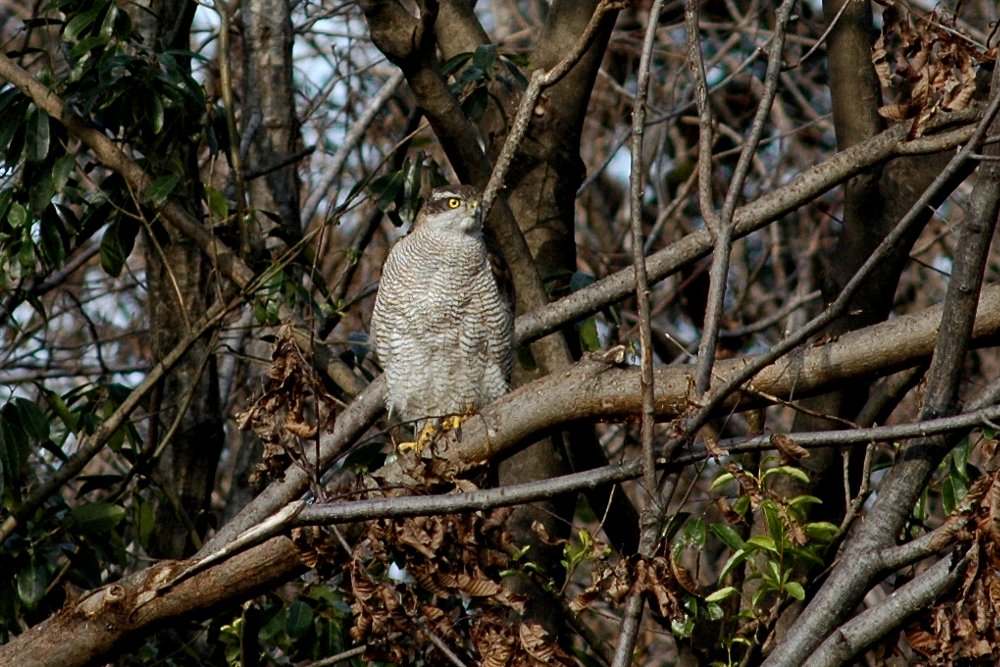むなかたが集まる
電子データベース
電子データベース
オオタカ

| 種目 | オオタカ (蒼鷹) | 分類 |
タカ目 タカ科 ハイタカ属 |
学名 | Accipiter gentilis | 英名 | Northern Goshawk |
|---|---|---|---|---|---|---|---|
|
オオタカ (蒼鷹) |
タカ目 タカ科 ハイタカ属 |
Accipiter gentilis | Northern Goshawk |
宗像市でみられる場所・時期
留鳥であり,1年中見ることができるが,夏場は里山に居ることが多く,田圃などでは目撃されにくい。
宗像市全域の丘陵地で目撃されており,数カ所で繁殖が確認されている。緩やかな丘陵地で,里山環境が多く残る宗像市は,オオタカの生息に適した環境と言える。
特徴
全長は,雄50㎝,雌56㎝。
雄はハシボソガラスくらいの大きさで,雌雄ほぼ同色である。
頭頂から体上面は暗青灰色で,雄の方がより黒色みが強く,雌は褐色がカル傾向がある。腮以下の体下面は白く,黒褐色の細かい横斑があり,♀の方がやや太いまたは荒い傾向がある。嘴は黒褐色で蝋膜,虹彩,足は黄色である。眼先から後方に暗い黒灰色の過眼線があり,眉班は白い。
幼鳥は全身褐色で,体上面は黒褐色の縦斑がある。
繁殖中は「ケッケッケッ・・・,ケー ケー」とよく鳴くが,繁殖期以外はあまり鳴かない。
習性
平地から山地の林,河川,農耕地,湖沼,公園などで生息する。繁殖期以外では一羽で生活する個体が多く,主に鳥類を捕り,ネズミ類やウサギなども食べる。
分布
九州北部以北で留鳥。南西諸島では少ない冬鳥。日本国内では,北海道,本州,四国,九州北部で繁殖する。
北半球を中心にユーラシア大陸,北米大陸に広く分布する。
その他
オオタカは漢字表記と異なる。漢字表記の通りであれば,「アオタカ」となる。背色が青みがかっていることから,蒼鷹となったが,読みが転化しオオタカとなったと言われている。
古来,鷹狩りに使われて,絵画の題材にされることも多かったため,日本では最も代表的なタカと言える。
 はじめに
はじめに お問い合わせ
お問い合わせ